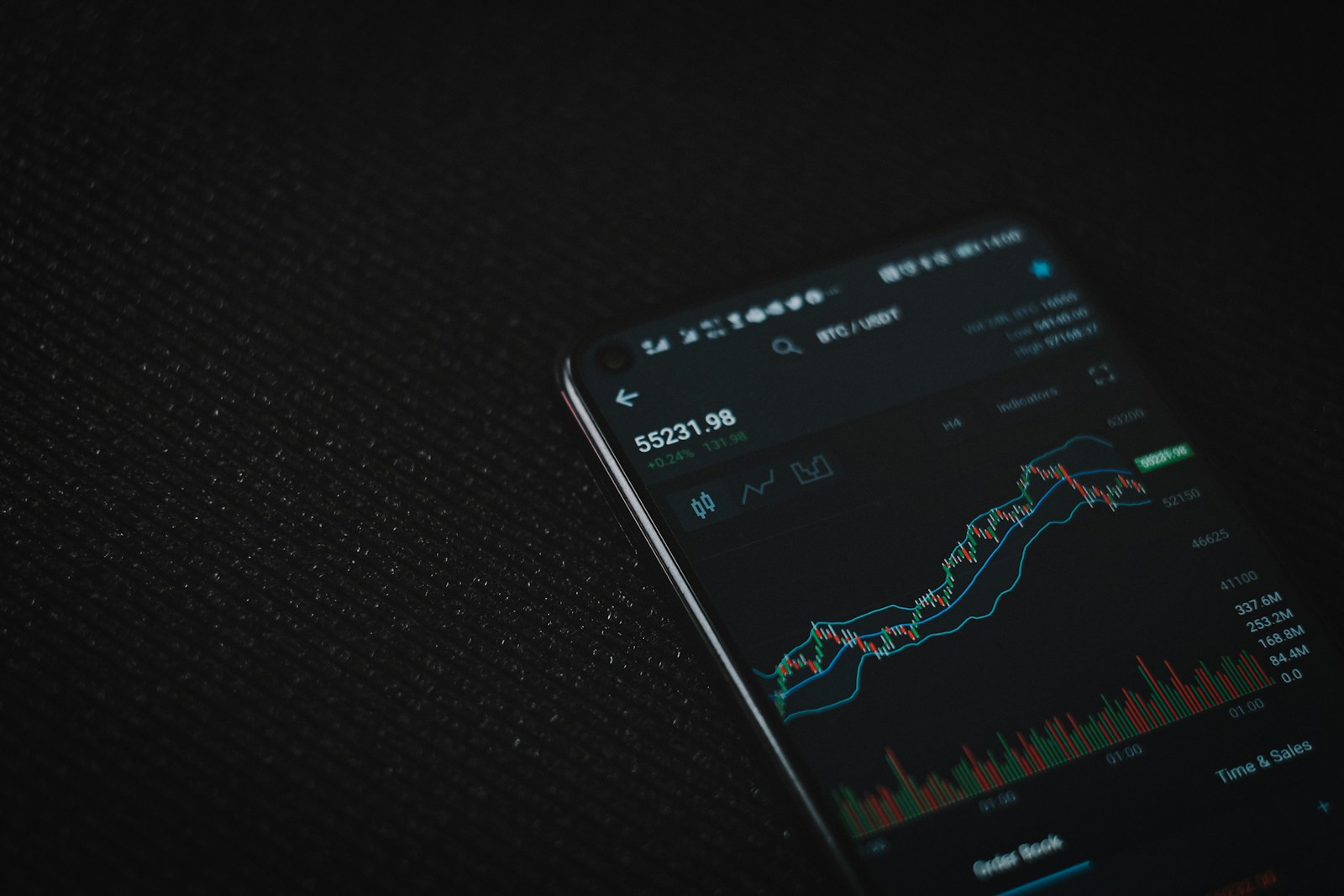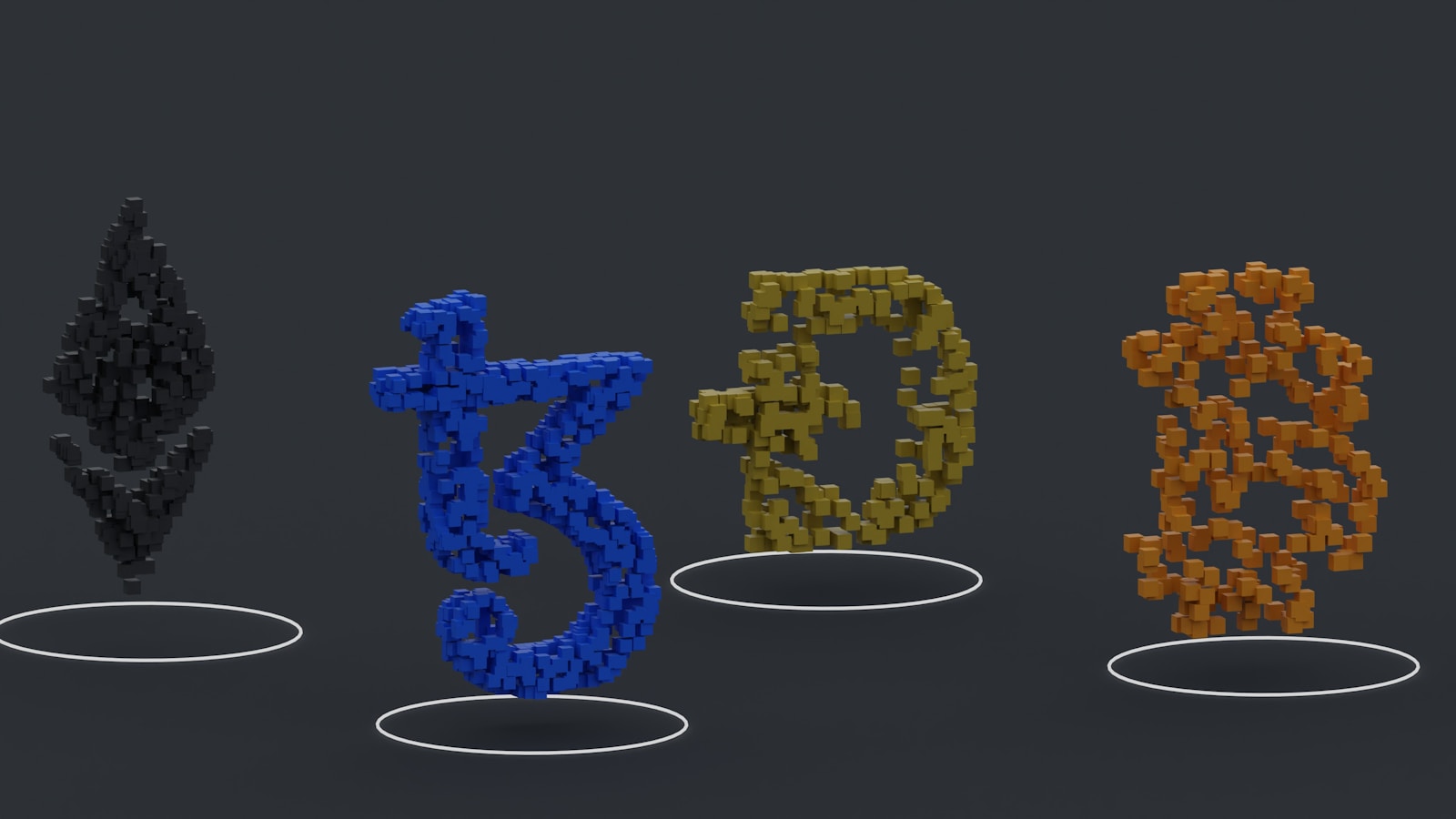
Spotting concentrated funds within the trading book demands precision. Depth charts often betray where substantial capital clusters, usually through thick layers of orders at specific price levels. For example, during recent sessions on the NASDAQ, over 60% of resting volume aggregated around key support zones between $250 and $255, revealing pockets where large players prefer to execute without causing abrupt price swings. Ignoring these order concentrations risks misjudging true market resilience and potential breakout points.
Understanding how liquidity distribution fluctuates throughout a session enhances trade timing. High-frequency traders monitor shifts in bid-ask imbalance that reflect hidden supply or demand. A sudden thinning of the book depth on one side frequently precedes sharp moves as latent capital withdraws or reallocates. In Q1 2024, data from CME Group showed that futures contracts exhibited up to a 35% reduction in visible orders prior to volatility spikes, signaling strategic concealment rather than absence of interest.
Why do major stakeholders mask their positions within layered order books? Because revealing large intentions invites front-running and slippage costs. Instead, they scatter sizable entries across multiple price points or utilize iceberg orders to fragment exposure. This tactic complicates straightforward volume analysis but can be detected by scrutinizing execution patterns and anomalous replenishment rates at certain depths. For instance, analyzing EUR/USD spot markets reveals how central banks occasionally deploy such methods to influence exchange rates subtly while maintaining market stability.
Integrating real-time order flow with historical depth profiles refines predictive accuracy. Traders who combine these datasets identify not just where liquidity accumulates but also when it becomes vulnerable to absorption or reversal. Recent studies indicate that clusters exceeding 10,000 contracts in commodity futures act as magnet zones for price retracements before eventual breakthroughs occur under sustained pressure. Recognizing these dynamics offers a tactical edge over participants relying solely on aggregate volume metrics.
The interplay between visible orders and concealed commitments shapes modern trading strategies profoundly. As electronic platforms evolve, so do techniques for camouflaging substantial stakes within fragmented order layers. Remaining vigilant about subtle shifts in book configuration helps decode where significant capital is stationed–information crucial for positioning ahead of momentum surges or defensive consolidations alike.
Liquidity analysis: where big money hides [Market Analysis]
To identify where substantial capital concentrates within cryptocurrency markets, focus must be placed on the order book’s depth and distribution. Large orders often lie beneath surface-level bids and asks, camouflaged by smaller trades that create an illusion of thin trading activity. Examining order placement patterns reveals pockets of significant capital waiting to execute, particularly in areas where cumulative volumes sharply increase beyond typical market fluctuations.
Recent data from major exchanges like Binance and Coinbase Pro show that clusters of high-volume orders tend to accumulate around psychological price levels–round numbers or historically significant support and resistance zones. For instance, BTC/USD order books frequently display large resting orders at $30,000 and $28,500, which act as liquidity walls influencing price behavior. Such concentrations demonstrate strategic positioning by institutional participants or algorithmic traders aiming to minimize slippage during execution.
The relationship between visible order book data and hidden liquidity is complex. Some actors employ iceberg orders–large trades split into smaller visible parts–to mask true intent. By analyzing sudden replenishment rates and cancellation patterns within the book, one can infer the presence of concealed volume. Tools leveraging time-weighted average price (TWAP) algorithms expose these tactics by comparing executed trade sizes against displayed order flow, offering insights into where considerable funds are effectively “hidden.”
Trading activity also highlights preferred venues for substantial transactions. Decentralized exchanges (DEXs) exhibit shallower depth compared to centralized platforms but compensate through aggregated liquidity pools that dynamically adjust via automated market maker protocols. This structure disperses large sums across multiple tokens rather than concentrating them in single limit orders. As a result, tracking pool size changes and swap volumes provides an alternative metric for detecting significant asset movements outside traditional order books.
Quantitative case studies emphasize how sudden shifts in order book composition precede notable price moves. In May 2023, ETH experienced a rapid surge after a buildup of sell-side orders was absorbed near $1,600 mark on Kraken’s platform. Detailed examination showed incremental increases in bid depth coupled with decreasing ask size–a sign that major holders were preparing to accumulate while smaller traders exited positions. Recognizing such patterns aids forecasting potential breakout or reversal points based on underlying liquidity distributions.
Ultimately, combining real-time order flow monitoring with historical depth analysis enables more precise localization of sizeable financial power within crypto markets. Rather than relying solely on headline volume metrics or price trends, integrating these multi-layered observations uncovers nuanced dynamics of capital deployment. This approach not only enhances trade execution strategies but also supports risk management by identifying zones vulnerable to rapid liquidation or accumulation events driven by concentrated holdings.
Identifying High-Volume Price Levels
Focus on the order book depth to pinpoint price zones where substantial trading activity accumulates. Large resting orders at specific levels indicate areas where significant capital is stationed, often resulting in strong support or resistance points. For example, during the recent BTC/USD fluctuations in April 2024, clusters of orders near $28,500 and $30,000 created notable market congestion, which effectively slowed down price advances and triggered reversals.
Examining volume profiles alongside order flow provides a clearer picture of concentration zones. These profiles highlight price ranges with heightened transaction volumes rather than just individual trade sizes. The combination reveals where institutional participants place their commitments, effectively revealing pools of funds that influence short-term trends and liquidity distribution across the book.
Order Book Dynamics and Market Impact
The interaction between limit orders and market orders significantly shapes price behavior around high-volume levels. When aggressive buyers consume large sell walls or vice versa, it often signals a shift in control from passive holders to active traders managing sizable portfolios. Monitoring such shifts helps anticipate potential breakout or breakdown scenarios by observing how quickly these clustered orders are absorbed or replenished.
Historical case studies reinforce this approach: during Ethereum’s major correction in mid-2023, concentrated sell orders above $1,800 repeatedly absorbed buying pressure until exhaustion occurred, triggering sharp declines. This pattern underlines the importance of identifying not just volume but also the persistence and replenishment rate within the order book to evaluate true supply-demand balance.
Algorithmic trading strategies frequently exploit these dense order concentrations for execution efficiency. By splitting large trades into smaller chunks executed around identified high-volume nodes, algorithms minimize market impact costs while maintaining stealth against other participants scanning for sizeable transactions. Recognizing these algorithm footprints can offer clues about where significant financial flows are maneuvering discreetly.
Lastly, cross-referencing order book data with on-chain metrics like token transfer volumes or exchange inflows adds an additional layer of verification. If a surge in exchange deposits coincides with reinforced sell-side layers in the order book at particular prices, it suggests accumulation or distribution phases orchestrated by entities managing considerable holdings. These combined insights improve forecasting accuracy and aid tactical decision-making during volatile periods.
Spotting Institutional Order Flow
Tracking institutional order flow requires a detailed examination of the order book’s depth, focusing on large-sized bids and asks that exceed typical retail volumes. These sizable entries often cluster at specific price levels, forming visible support or resistance zones that reveal where significant capital commits to the market. A thorough book analysis highlights not only volume but also order placement patterns–iceberg orders, for example, mask true size by displaying only a fraction of the total order, complicating straightforward detection but offering clues when combined with time and sales data.
Order flow identification improves by monitoring liquidity shifts during high-frequency trading windows, such as market opens or major news releases. Sudden increases in resting orders on one side of the book frequently indicate algorithmic strategies employed by institutions to accumulate or distribute positions without triggering excessive slippage. For instance, in BTC/USD futures markets, clusters of limit orders exceeding 10 BTC at nearby price ticks have historically preceded sharp directional moves as these latent volumes execute progressively.
Depth Profiles and Hidden Intentions
The spatial distribution of orders across multiple price levels can expose strategic positioning by professional traders. Deep books with consistent volume near round-number prices often suggest accumulation phases rather than sporadic retail interest. Case studies from Ethereum spot markets demonstrate how institutional players place layered orders spaced narrowly within 0.1% increments to absorb counterparty flow while managing exposure risk dynamically. This technique effectively conceals large-scale intentions behind seemingly fragmented activity.
Advanced platforms enable cross-referencing live order book snapshots with executed trades, revealing discrepancies between displayed liquidity and actual fills–a key indicator of hidden large orders manipulating apparent market depth. By analyzing metrics such as order lifetime and fill rates, analysts discern genuine resting volumes from fleeting quotes designed to mislead competitors or gauge market reaction. Such granular insights remain indispensable for interpreting complex execution strategies amid evolving conditions in decentralized exchanges and centralized venues alike.
Using Volume Profile for Entry Points
Volume profile reveals concentration zones of traded contracts or coins, highlighting where liquidity accumulates within the order book. These zones often coincide with price levels where substantial orders reside, causing market participants to pause or reverse positions. Identifying these clusters allows traders to enter positions with a clearer understanding of supply and demand dynamics, reducing slippage risks caused by thin books or fragmented depth.
For example, during a recent Bitcoin correction in early 2024, volume profile data showed significant accumulation between $28,500 and $29,000. This range acted as a magnet for institutional bids, creating a robust support level. Traders who timed entries around this zone benefited from immediate liquidity and minimized exposure to unpredictable price gaps that typically occur in low-volume regions.
Liquidity Pools and Their Impact on Price Movement
The distribution of executed trades along price levels forms peaks and valleys within the volume profile chart. Peaks indicate areas with dense trading activity–often correlating with resting large orders or stop-loss clusters–while valleys reflect sparse interaction. Such pockets attract considerable capital flows, as they represent consensus prices favored by various market participants. Recognizing these areas provides insight into potential reversal points or breakout triggers.
Consider Ethereum’s market behavior during Q1 2024: volumes clustered prominently around $1,850-$1,900 before a sharp upward momentum ensued. This consolidation phase demonstrated how volume-based price discovery precedes volatility surges. Traders monitoring the depth at this stage could anticipate entry opportunities backed by tangible order book support rather than relying solely on candlestick patterns.
Integrating volume profile with order book snapshots enhances precision when selecting entry levels. While the order book displays real-time bid-ask sizes and immediate liquidity availability, the volume profile aggregates historical executed volumes per price bucket over specified intervals. This combination offers a layered perspective: current depth versus historical participant commitment.
In practical terms, if an asset shows thick volume nodes near present prices but the order book lacks substantial resting orders, it signals latent interest that might activate once triggered by short-term fluctuations. Conversely, large visible orders without corresponding past volume may be transient or manipulated walls designed to deceive traders about genuine supply-demand equilibrium.
- Volume nodes can serve as natural stop-loss placement zones due to their role as psychological barriers.
- Trade execution strategies benefit from entering near high-volume areas to ensure rapid fills with minimal slippage.
- Avoid entering mid-valley zones where thin trading history may cause erratic price swings and reduced market depth.
A comprehensive grasp of both visible liquidity layers and cumulative traded volumes prevents misjudging entry points based solely on fleeting order book snapshots. The synergy of these metrics reduces execution risk amidst complex market microstructures dominated by algorithmic participants placing stealth orders beyond human detection thresholds.
Ultimately, strategic entries anchored on detailed examination of aggregated volume profiles alongside real-time order book data provide enhanced confidence amid volatile crypto markets. By targeting areas dense with historic transaction flow and verifying contemporaneous liquidity availability, traders position themselves advantageously against sudden shifts driven by concentrated capital deployments or automated smart money tactics.
Recognizing liquidity gaps impact
Identifying voids in the order book depth is critical for understanding abrupt price movements and market inefficiencies. Such gaps occur when there is a scarcity of resting orders within a certain price range, causing large transactions to encounter minimal resistance or support. For instance, during the March 2020 crypto market crash, significant order book thinning led to extreme slippage as market participants struggled to fill sizeable orders without drastic price changes. This phenomenon highlights how pockets of unfilled bids or asks can dramatically influence asset volatility and trading costs.
Order flow clustering often reveals where substantial capital accumulates away from visible quotes. These concentrations typically hide behind thin layers in the book, creating deceptive impressions of market strength or weakness. A detailed examination of depth charts from exchanges such as Binance and Coinbase Pro shows that these hidden reserves can trigger sudden liquidity droughts once large market orders consume nearby offers. Traders relying solely on top-level order visibility risk misjudging true supply-demand dynamics, underscoring the necessity of comprehensive depth scrutiny.
Mechanics and effects of missing bids and asks
The absence of sufficient resting orders between key price levels leads to amplified spreads and erratic execution prices, especially under high-volume conditions. This gap enlarges execution risk by forcing large taker orders to “walk” through multiple price tiers rapidly. For example, during high-stress events like network congestions or exchange outages, the visible order book may seem orderly while actual liquid funds lie dormant beyond immediate quotes–delaying fills and inflating transaction fees. Quantitative studies reveal that markets with higher order book fragmentation tend to experience more pronounced short-term dislocations and reduced trade efficiency.
Market makers and algorithmic traders actively monitor these discontinuities to adjust their quoting strategies dynamically. By detecting where resting interest thins out, they either retract liquidity provision or place strategic hidden orders to mitigate exposure risks. The 2023 Terra Luna aftermath illustrated this behavior vividly: as trust evaporated rapidly, many liquidity providers withdrew en masse, deepening gaps and accelerating price collapse due to insufficient counterparty presence in the order queues.
A practical approach involves combining real-time order book snapshots with historical depth metrics for predictive modeling. Tools analyzing cumulative volume at varying distance thresholds from mid-price enable anticipation of potential liquidity voids before they materialize into adverse price swings. Incorporating such data into execution algorithms enhances routing decisions by avoiding routes crossing known deficits in available capital layers–thereby minimizing slippage impact during large-scale trades executed on decentralized platforms like Uniswap V3 or centralized venues alike.
Conclusion: Unveiling the Depths of Stop-Loss Clusters in Order Books
Identifying concealed stop-loss clusters within order books provides a strategic edge in trading, revealing where substantial orders accumulate beneath apparent market levels. Such clusters often form at specific price points, creating pockets of latent liquidity that can trigger abrupt price movements when reached. For example, during recent BTC/USD fluctuations, hidden stop zones around $28,500 and $27,800 acted as magnet points for aggressive liquidation cascades, illustrating how these depths influence short-term volatility.
Advanced examination of order book structures combined with trade flow monitoring allows traders to anticipate potential cascade events by mapping aggregated stop orders. This insight transforms passive data into actionable intelligence–spotting where accumulated sells or buys lay dormant before activation. Integrating heatmaps with volume profile analysis further refines detection of these critical zones, exposing the subtle interplay between resting orders and triggered executions.
Technical Implications and Forward Outlook
- Order Book Transparency: As exchanges evolve their APIs to provide richer depth snapshots–including iceberg and hidden order visibility–traders gain unprecedented clarity on clustered stops embedded beyond visible best bids and asks.
- Algorithmic Adaptation: Trading algorithms must incorporate multi-level clustering metrics rather than relying solely on top-of-book data; this shift enhances predictive accuracy concerning sudden liquidity vacuums.
- Risk Management Enhancements: Recognizing where concentrated stop-losses lie enables more precise placement of protective orders and hedges, minimizing slippage during rapid market moves.
- Market Maker Strategies: Liquidity providers can optimize quoting strategies by anticipating when these latent supply-demand barriers break down, adjusting spreads dynamically to protect capital while capturing transient arbitrage.
The ongoing refinement of tracking methodologies suggests future tools will merge real-time blockchain transaction data with off-chain order book states, offering a holistic view of liquidity fragmentation across venues. Could cross-exchange arbitrage desks leverage such integrated feeds to detect synchronized stop-loss activations? Likely yes–this would markedly alter intraday price formation patterns by exposing previously unseen liquidity pockets.
In conclusion, dissecting the intricacies of clustered stop-loss orders deepens understanding of market microstructure. Far from random noise, these clusters represent concentrated decision nodes shaping price trajectories through discrete layers within the order book’s fabric. Staying attuned to their emergence equips traders and institutions alike to navigate volatility with greater precision and resilience amid evolving market dynamics.






